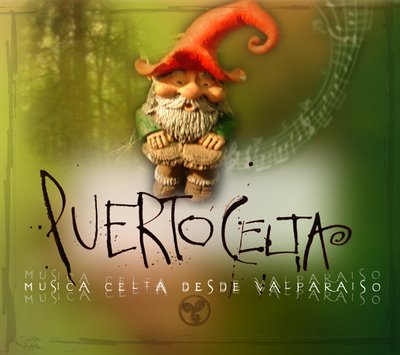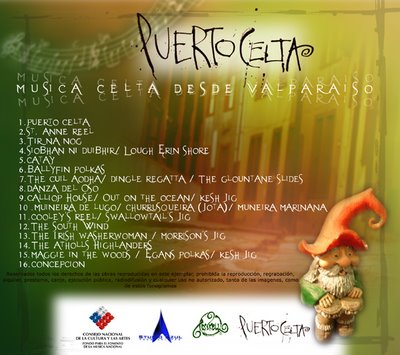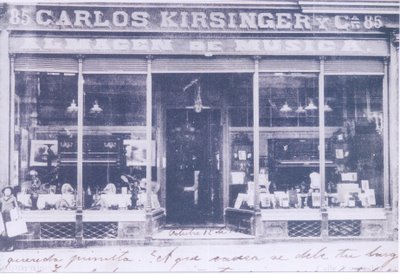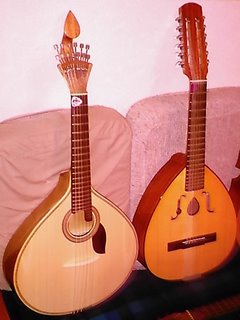Playing pipes at Los Andes

I was playing smallpipes in the inner andean río Claro valley at Pisco Elqui last week. Being the only one there learning the A fingering of those pipes, reminded me that the bagpipes or gaitas are rather an uncommon instrument over here.
The bagpipe is a folk reed instrument I do really like because its piercing sound and droning that is somewhat little known in Chile and probably even more in most other andean countries. Traditionally here it is an instrument that was locally played and kept intra muros by mostly spanish galician and asturian players at fiestas and other gatherings at the Club or centro español of every single major town in Chile. Other pipes like the irish and scottish styles were more restricted to smaller british communities. These pipers not matter its origin usually gathered as pipebands with a few pipers plus drums. Examples of these folk traditions that have developed its bagpipe repertoire for quite a while are the Lar Gallego de Chile, Os Derradeiros at Temuco, and thanks to the people gathered around the chilean asturian piper Andrés Soberón, the banda de gaitas asturianas de Santiago and the Grupo de gaitas asturianas de Valparaiso, more recently the Eagle School pipeband from Antofagasta and the Andes Highlanders Pipeband at Santiago. On the other hand, from the late 1990's onwards there have been a new development by the use of bagpipes outside the typical folk pipeband repertoire within folk assembles or celtic bands started with the earlier Lir (gaita asturiana) and Viento celta (uilleann pipes), plus perhaps a dozen other bands. A few of them have recorded CDs using bagpipes such as Viento celta, Puerto celta (gaita gallega, uilleann pipes), Banda danzante (gaita gallega, uilleann pipes), and Veigal do Maipo (gaita gallega).
Current chilean celtic bands seems to use more gaita gallega and uilleann pipes than any other styles. However, at least four other chilean folk groups of other non celtic traditions play galician, breton and medieval bagpipes in their assembles. Two of them, Calenda Maia and In Taberna focus on medieval folk musical traditions, Aurha from Valparaiso uses them to add its sound to their world music fusion, whereas another band, Tripolis from Antofagasta focus on the greek folk musical traditions.
Across the Andes, in argentinean cities like Mendoza, and Bariloche there are pipebands or pipers, such the asturian Folixa that along the chilean galician and asturian bagpipers have even organized recently a south american spanish style pipeband gathering, and now they are on their way to have the II gathering next December at Santiago. Therefore, this chilean bagpiper's listing have organised members playing in bands at Antofagasta, Valparaiso, Santiago, Concepción, Temuco, Valdivia, and on the Magellan straits at Punta Arenas.
The bagpipe is a temperamental instrument, and most of those found in Chile are imported from european makers by clubs and the bands themselves. Also, there are at least a couple of pipers who assemble bagpipes sets on request. Leo Rivas using Dave Daye chanters do make irish uilleann practice sets, and Lucas Canga with the collaboration of one argentinean maker from lago Puelo and the galician Arraiamuida obradoiro (workshop) is offering in his blog school and professional galician and asturian gaitas, scottish GHB and smallpipes, plus chanters and reeds. Another maker, José Ramón Castaño makes galician cane reeds and drones.
More info on bagpipes in Spanish at http://www.almargen.com.ar/sitio/seccion/musica/gaita/
Many of these bands have been previously selected and some will be present from next October 6th to 8th in Valparaiso at the IV Festival de Música Inmigrante.













